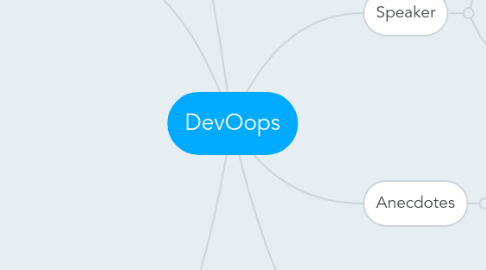
1. Themes
1.1. More frequent releases
1.2. Continuous integration pipeline
1.3. All environments should be production like
1.4. Smaller service,s API's, web applications, and modular
1.5. Automated configuration
1.6. Automated database migrations
1.7. Quicker release to market and lower failure rate
2. Benefits
2.1. Developer
2.1.1. Continuous software developer
2.1.2. less complex problems to fix
2.1.3. quicker resolution of issues
2.2. Business
2.2.1. faster release of features
2.2.2. more stable enviornments
2.2.3. developers can add features (value) instead of maintaining existing systems
3. Concrete Things to Do
3.1. Database Migrations
3.1.1. SQL is treated like code
3.1.2. Automatic Migrations
3.1.3. Environment Schemas are the same
3.2. Server Configuration
3.2.1. configure server
3.2.2. virtualization
3.2.3. containers
3.2.4. infrastructure
3.2.5. Windows
3.2.5.1. chocolatey
3.3. Logging and Monitory
3.3.1. application alerts
3.3.2. error notifcations
3.3.3. performance metrics
3.3.4. centralized logs
3.4. Service Discovery
3.4.1. Configure services
3.4.2. Automatic scaling
3.4.3. Failover protection
3.5. Customer Service
3.5.1. ZenDesk/Jira
3.5.2. Hipchat/Slack
3.5.3. Intercom
3.5.4. Olark
3.5.4.1. chat customer service ... service
4. Speaker
4.1. Brandon Weber
4.2. National Pork Board
4.2.1. 100+ sites and APIs
4.2.2. 200+ Nuget packages and Wordpress plugins
4.2.3. deploy to production daily
4.2.4. Requests for new sites every 2 week sprint
4.2.5. 4 developers, 1 DBA, 1 SysAdmin
5. Anecdotes
5.1. Mickey Mouse failed database rollback
5.2. Cherry pick things into #master for a deploy
5.2.1. doesn't scale at 6-8+ devs
5.3. Spinning Plates "DevOps Engineer"
5.3.1. Jenkins crashing every day
5.3.1.1. incompatible plugin, spewing logs
